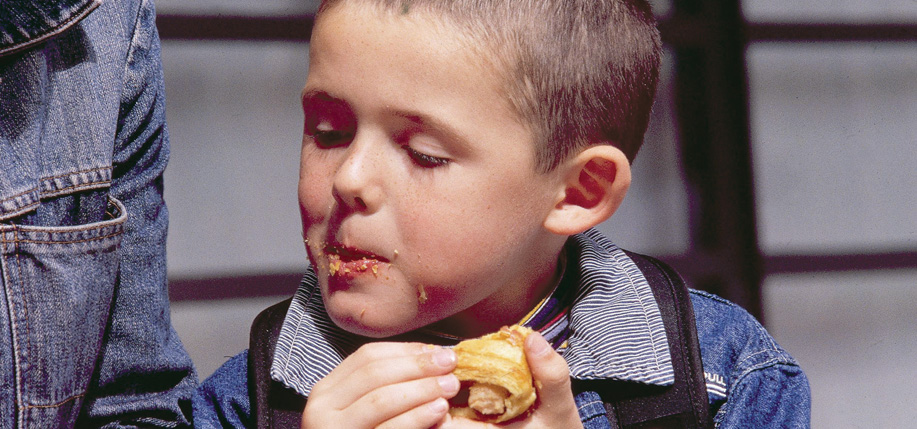When autumn arrives, trees turn shades of ochre, orange and scandalous scarlet, scents of wood smoke waft on the suddenly chill air, and I am annually reminded of my first trip to Ireland. It was October, and after landing at Shannon, I rented a car and headed for my lodging, a country estate in County Sligo. As I drove, I smelled something burning. Figuring I was passing through an industrial area I gave it no heed, but as I moved into the countryside, the smell persisted. Finally, I pulled into a gas station, sure that the car was on fire. The attendant looked the motor over thoroughly, gave me a bemused look, assured me there was nothing wrong, and waved me on my way.
But the smell persisted. When I arrived at my destination and entered the house, I was hit with a fresh wave of the same burning odor. There in the fireplace before me lay my first encounter with a turf fire. Only then did I realize that all along I had been smelling the pungent aroma of burning peat coming from a multitude of home hearths.
My embarrassment at mistaking the smell of peat for a fire in my vehicle was assuaged by the arrival of my hostess, who carried in a tray loaded with a steaming pot of tea, slices of butter-slathered bread still warm from the oven, and wild blackberry preserves. The following morning, the kitchen was all abuzz.
Guests were enjoying hearty Irish breakfasts and the household’s children were being hustled off to school, each with a packed lunch of crisp juicy apples from the family orchard and thick slabs of buttered wholemeal brown bread sandwiching slices of the previous night’s dinner, a fine roast beef. A wave of nostalgia washed over me as I slipped several decades back in time and remembered all the wonderful sandwiches I had enjoyed in grade school.
My lunch was always more interesting than what my classmates had brought. Except for Paulette who sometimes had a thermos of soup, all the other girls only ate peanut butter and jelly sandwiches. My lunch, however, was rarely the same two days in a row as it almost always consisted of what my dad called ‘butties’ – basically anything at all sandwiched between two slices of buttered bread. His personal favorite was baked beans, but they didn’t travel well.
The ‘butties’ I took to school were almost always made with dinner leftovers and ranged from roast beef, lamb, pork or chicken to Thanksgiving turkey, Easter ham, meatloaf or Italian meatballs. Meatless Fridays required a different approach, and on those days I had tuna fish salad or hard-boiled eggs with sliced tomatoes. One thing remained constant regardless of the filling: the bread was always buttered. Many years later, while on a food foray in Northern Ireland, I discovered that a Fried Potato Buttie is a popular antidote to the wobblies one gets after an all-night pub crawl.
Why ‘butties’ are practically a national dish in Ireland has little to do with the filling. Bread and butter are mainstays of the Irish diet. Every homemaker has treasured recipes for soda bread, wheaten bread, scones, biscuits and farls, and no table is complete without a tub of sweet creamy butter. Ancient Ireland was a land of cattle where healthy stock and an abundance of milk made all the difference between prosperity and poverty. Milk products were known as ban bhia, or white meat, and included all possible variations: fresh milk, sour milk, buttermilk, cream, butter, curds and cheese. Every farmhouse had its butter-making equipment: churn, crockery pans, ladles, skimmers, scoops, stamps for decorating butter with floral designs, and pats to cut butter into conveniently sized pieces for the table.
If the household’s butter was not going to be eaten immediately, salt was added as a preservative, but this was considered an inferior product. Like every other aspect of Irish life, there was a Brehon Law that addressed butter. Sons of farmers ate gruiten (salted butter) with their porridge, sons of chieftains had im ur (fresh butter), and sons of kings received sweet butter and honey.
Butter was stored in baskets, cloth bags, or leather sacks, and turf cutters have discovered many examples buried in peat bogs. When a family made more butter than it could use, the excess was buried in a cool moist bog to keep from spoiling. This method of keeping butter from turning rancid was also used by herders in mountain pastures who made butter all summer long but did not sell it until harvest fairs.
Butter has always played an important economic role in Ireland. At one time, every family had a cow to provide its essential milk, butter and cheese. On a small scale, butter supplied families with a means of exchange for other food items and materials, or it was sold at market for a meager income. In places where production was high, butter was exported. County Cork became the center of Ireland’s dairy industry, and in the 18th century Cork City was considered The Butter Capital of the World. From its Butter Market and Butter Exchange in the Shandon district, the fresh butters of Cork and Kerry were salted and exported to the best tables of Europe.
Butter still holds a primary place of honor in the Irish kitchen. It is drizzled on meats, stirred into sauces, beaten into cakes, puddled in bowls of colcannon, plunked into porridge, and slathered thickly on all types of bread at every possible opportunity.
When guests come to call, a plate of Jam Butties and a hot pot of tea are evidence of Irish hospitality at its best, and nothing beats Left-over Dinner Butties for school lunches. Sláinte!


Leave a Reply